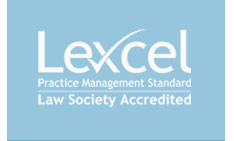- Bromley020 8290 0333
P v Q [2022] - The treatment of loans to and from family members in financial remedy proceedings
Background
This case concerned W (aged 48) and H (aged 45). They began cohabiting in 2005 and married in 2006. The parties had two children (aged 10 and 11).
The total asset pot was circa £6million. Notable assets in the marriage included the parties' respective shares in a company, the former family home in London and H's pension.
Aside from the division of assets, there were disputes relating to transactions between the parties and members of their own family and how these should be treated in the proceedings. Of particular significance were the following two transactions:
H's repayment to his mother
H's mother gave £150,000 to each of her 3 children in 2010. No documents were drawn up in relation to this, there was no evidence of tax planning and no demand was ever made for the sums. In June 2020, H repaid the sum to his mother without any demand from her and without any reference to W.
During the proceedings, H argued that this sum should not appear on the asset schedule as the money had now gone. W asserted this was a manipulative device to remove the sum from the schedule.
W's liability to her father
In October 2004, W's father had given her €30,000 to study an MBA. There was a document at the time describing the payment as an 'interest free loan" for which "a date for repayment has not been set" and the arrangement includes the term that " as long as the father does not demand any extraordinary urgent repayment, the daughter will repay the loan back at her own discretion."
W made no mention of this liability in her Form E or Section 25 Statement. It was not until 12 January 2022 that she mentioned the loan. Her explanation for this was that she had forgotten about it until going through old documents and speaking to her father recently.
The steps the court took in determining the issue:
Step 1: Gift or Loan?
The judge had to consider whether the advances should be considered gifts or loans. As a general principle, for the advance of money to be a gift there must be evidence of an intention to give. In this case, neither party had been able to show this about transactions and the judge concluded that the transactions were loans which could be enforced.
Step 2: Hard or soft loan?
The judge considered authorities dealing with hard vs soft debts, and summarised the principles arising from the authorities as follows:
- a) Once a judge has decided that a contractually binding obligation to a third party exists, the court may properly wish to go on to consider whether the obligation is in the category of a hard or soft obligation – the former automatically forming part of the computation, the latter involving an element of discretion.
- b) There is not a hard or fast test as to when an obligation will be considered hard or soft and the authorities reveal a wide variety of circumstances which cause a particular obligation or loan to fall on one side or other of the line.
- c) The analysis undertaken looks at whether or not it is likely in reality that the obligation will be enforced.
- d) There is not an exhaustive list of the factors that may make an obligation hard or soft.
- e) Factors which on their own or in combination point towards the conclusion that an obligation is hard include:
- 1. the fact that it is an obligation to a finance company;
- 2. that the terms of the obligation have the feel of a normal commercial arrangement;
- 3. that the obligation arises out of a written agreement;
- 4. that there is a written demand for payment, a threat of litigation or actual litigation or actual or consequent intervention in the financial remedies proceedings;
- 5. that there has not been a delay in enforcing the obligation; and
- 6. that the amount of money is such that it would be less likely for a creditor to be likely to waive the obligation either wholly or partly.
- f) Factors which may on their own or in combination point towards the conclusion that an obligation is soft include:
- 1. it is an obligation to a friend or family member with whom the debtor remains on good terms and who is unlikely to want the debtor to suffer hardship;
- 2. the obligation arose informally and the terms of the obligation do not have the feel of a normal commercial arrangement;
- 3. there has been no written demand for payment despite the due date having passed;
- 4. there has been a delay in enforcing the obligation; or
- 5. the amount of money is such that it would be more likely for the creditor to be likely to waive the obligation either wholly or partly, albeit that the amount of money involved is not necessarily decisive, and there are examples in the authorities of large amounts of money being treated as being soft obligations.
- g) It may be that there are some factors in a particular case which fall on one side of the line and other factors which fall on the other. It is for the judge to determine, looking at all of these factors and maybe other matters, the appropriate determinations to make in a particular case in the promotion of a fair outcome.
Conclusion
The judge held that W's debt to her father was "very much at the soft end of the scale". It was very unlikely that she would ever be required to make a repayment, notwithstanding the document that had been produced.
The debt owed by H to his mother fell into the same category. The judge found that H made the repayment to his mother because he was concerned about W's sharing claim in respect of that sum.
The consequences of these conclusions were that W's debt to her father was not included in the asset schedule and H's repayment to his mother was re-credited to his side of the schedule.
Written by : Nusrat Siddique (Solicitor)









